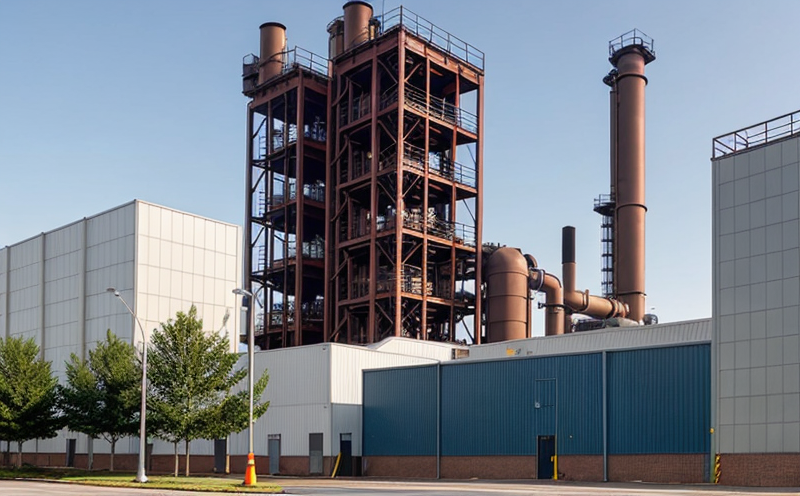EN 1090 Structural Steel and Aluminum Compliance Testing
The European Standard EN 1090 provides a framework for the production, testing, and certification of structural steel and aluminum components used in construction. This standard ensures that materials meet stringent quality requirements to guarantee safety in critical applications such as bridges, industrial facilities, and offshore platforms.
For industries relying on structural integrity and compliance with international standards, EN 1090 is indispensable. It defines the testing procedures for mechanical properties, chemical composition, and surface quality of steel products. Compliance tests under this standard are conducted to ensure that materials meet the specified requirements for resistance to fatigue, corrosion, and other environmental stresses.
The scope of EN 1090 extends beyond mere physical compliance; it encompasses a comprehensive approach to quality assurance in manufacturing processes. This includes not only mechanical testing but also non-destructive testing (NDT) methods such as magnetic particle inspection and ultrasonic testing. The standard ensures that all components are fit for purpose, reducing the risk of failures or accidents.
The importance of EN 1090 cannot be overstated in sectors where safety is paramount. By adhering to this standard, manufacturers can demonstrate their commitment to quality and compliance with international best practices. This not only enhances market credibility but also ensures that products are fit for the specific application intended by the designer or engineer.
EN 1090 is particularly relevant in industrial manufacturing where structural integrity is critical. In these environments, materials must withstand extreme conditions such as high loads and environmental exposure. The standard provides a robust framework to ensure that materials meet these demands, thereby minimizing risks associated with structural failures.
The testing procedures outlined in EN 1090 are designed to be rigorous yet practical, allowing manufacturers to produce reliable components efficiently. This balance between quality assurance and production efficiency is crucial for maintaining competitiveness in the global market.
Compliance with this standard also opens up opportunities for international collaboration and trade. Many countries around the world have adopted EN 1090 as a benchmark for structural steel and aluminum products, making it easier for manufacturers to export their goods without facing additional barriers or delays due to differing standards.
In summary, compliance testing under EN 1090 is essential for ensuring that structural steel and aluminum components meet the highest quality standards. This standard plays a vital role in safeguarding lives and property by preventing potential failures and accidents. For industries relying on these materials, adherence to EN 1090 ensures not only regulatory compliance but also a competitive edge in the market.
Scope and Methodology
The scope of EN 1090 covers various aspects of structural steel and aluminum production, including chemical composition analysis, mechanical testing, non-destructive testing (NDT), and certification. The standard defines the requirements for materials used in fabrication processes to ensure they meet specified quality criteria.
| Aspect | Description |
|---|---|
| Chemical Composition Analysis | This involves determining the elemental composition of steel and aluminum alloys. It ensures that materials comply with specified chemical limits, which are critical for performance and safety. |
| Mechanical Testing | Includes tensile testing to assess strength and ductility, hardness testing, impact testing (for toughness), and bend tests. These tests evaluate the mechanical properties of components under various conditions. |
| Non-Destructive Testing (NDT) | Methods like magnetic particle inspection and ultrasonic testing are used to identify flaws or imperfections without damaging the material. This ensures that only defect-free parts pass through the manufacturing process. |
| Certification | The standard mandates a certification process to validate compliance with all specified requirements. Certificates issued under EN 1090 are internationally recognized, enhancing market credibility and facilitating trade. |
The methodology for conducting these tests is detailed in the standard, ensuring consistency and reliability across different laboratories. This standardized approach allows for accurate and repeatable results, which are essential for quality assurance.
Industry Applications
EN 1090 Structural Steel and Aluminum Compliance Testing finds application in a wide range of industries where structural integrity is paramount. These include:
- Bridges: Ensuring that materials used in bridge construction meet the highest safety standards.
- Offshore Platforms: Critical for offshore oil and gas operations, ensuring components can withstand harsh marine environments.
- Aerospace Manufacturing: Vital for parts used in aircraft structures, where weight and strength are key factors.
- Construction: Used to test materials intended for high-rise buildings and other large-scale construction projects.
In each of these sectors, the compliance testing under EN 1090 plays a crucial role. It ensures that components meet the stringent requirements necessary to operate safely in their respective environments. This standard is particularly important for industries where failure could lead to significant loss of life or property damage.
Competitive Advantage and Market Impact
Compliance with EN 1090 Structural Steel and Aluminum Compliance Testing offers several competitive advantages for manufacturers. Firstly, it enhances market credibility by demonstrating a commitment to quality and adherence to international standards. This is particularly important in industries where safety is a critical concern.
Secondly, compliance with this standard opens up opportunities for international collaboration and trade. Many countries have adopted EN 1090 as a benchmark for structural steel and aluminum products, making it easier for manufacturers to export their goods without facing additional barriers or delays due to differing standards.
In addition, adherence to EN 1090 can help manufacturers differentiate themselves in the market by offering high-quality materials that meet strict safety and performance criteria. This can lead to increased customer confidence and loyalty, ultimately contributing to a stronger brand reputation.
The standard also ensures that manufacturing processes are efficient and consistent, reducing production costs while maintaining high quality standards. This can enhance profitability by allowing manufacturers to produce reliable components at competitive prices.
Finally, compliance with EN 1090 can help reduce the risk of product recalls or legal challenges due to non-compliance. By adhering to this standard, manufacturers demonstrate their commitment to safety and quality, which can mitigate potential liabilities and reputational damage.





